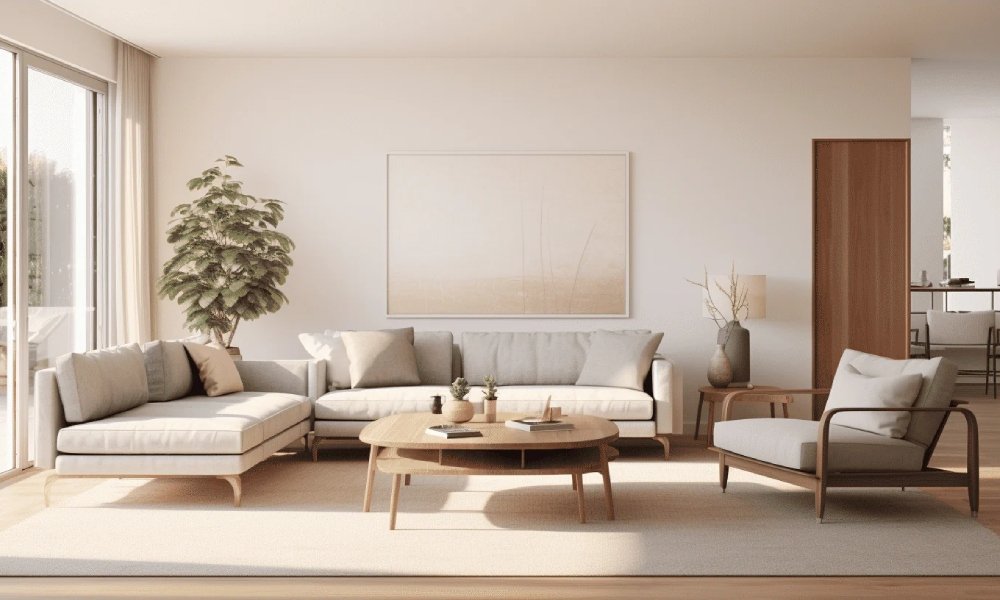In today’s fast-paced, consumer-driven world, it’s easy to accumulate more than we truly need. From clothes to gadgets, the constant flow of new items can lead to clutter—not only in our homes but also in our minds. Minimalist living, a lifestyle choice focused on simplicity and intentionality, encourages us to declutter both physically and mentally. It’s about surrounding yourself only with what truly adds value to your life, and letting go of excess.
If you’re looking to simplify your surroundings and create more space for the things that matter, here’s your guide on how to embrace minimalist living and declutter your life.
1. Understanding Minimalist Living: More Than Just Decluttering
Minimalist living isn’t just about getting rid of things—it’s a mindset. It’s about living intentionally, focusing on quality over quantity, and making space for what truly matters to you. When you choose minimalism, you’re deciding to prioritize experiences, relationships, and personal growth over material possessions. The goal isn’t to own as little as possible, but to surround yourself with only what brings joy, functionality, or meaning to your life.
The Core Principles of Minimalism:
- Intentional Living: Every item you own should serve a purpose or bring value to your life.
- Quality Over Quantity: Focus on high-quality, durable items rather than accumulating things you don’t need.
- Mindful Consumption: Be intentional about new purchases, ensuring they align with your lifestyle goals and needs.
2. Step-by-Step Guide to Decluttering Your Home
Decluttering your home is the first tangible step in embracing minimalism. It can seem overwhelming, but breaking the process down into manageable tasks can make it easier. Here’s a guide to help you begin:
Step 1: Start Small
Begin with one area at a time. Tackling an entire home all at once can lead to burnout, so start small. A drawer, a closet, or even just a single room. Once you see progress in one area, it’ll inspire you to keep going.
Step 2: Sort by Category, Not Location
Marie Kondo’s method of decluttering, popularized by her book The Life-Changing Magic of Tidying Up, encourages you to sort items by category—clothes, books, papers, miscellaneous items, and sentimental objects—rather than by room. This approach helps you assess the total amount of each type of item you have, making it easier to see where you can cut back.
Step 3: Ask Yourself the Key Question
For each item, ask yourself, “Does this add value to my life? Does it serve a purpose?” If the answer is no, it’s time to part with it. Be honest with yourself and remember that it’s okay to let go of things that no longer align with your needs.
Step 4: Implement the One-In, One-Out Rule
To maintain minimalism, adopt the one-in, one-out rule. For every new item you bring into your home, make sure to get rid of something. This keeps your possessions in check and prevents clutter from creeping back in.
3. Decluttering Your Digital Space
Just as physical clutter can overwhelm us, so can digital clutter. Our phones, computers, and online storage systems are often filled with files, emails, and apps that no longer serve a purpose. By decluttering your digital space, you can create more mental clarity and reduce distractions.
Step 1: Organize Your Files
Take some time to go through your computer, tablet, and phone. Delete files, photos, and apps that are no longer needed. Consider organizing documents into folders and labeling them clearly so they’re easy to access when needed.
Step 2: Clean Up Your Email Inbox
Unsubscribe from email lists that no longer interest you. Organize your inbox with folders or labels to keep important emails easy to find, and consider using an email management tool to automate the process of unsubscribing from newsletters or junk mail.
Step 3: Limit Digital Distractions
Examine your digital habits and consider reducing screen time. Unfollow social media accounts that don’t bring you joy or add value to your life. Set boundaries for when and how often you check your phone, so it doesn’t take up unnecessary time and attention.
4. Adopting a Capsule Wardrobe: Simplify Your Closet
One of the easiest ways to embrace minimalist living is by curating a capsule wardrobe. This approach encourages you to build a wardrobe based on a few versatile, high-quality pieces that you can mix and match. This not only reduces clutter but also makes it easier to get dressed and feel confident every day.
Steps to Create Your Capsule Wardrobe:
- Assess Your Current Wardrobe: Take everything out of your closet and assess what you actually wear versus what you’re holding onto out of obligation or sentiment. Donate or sell clothes you no longer love or wear regularly.
- Choose Timeless Pieces: Focus on timeless, versatile items that can be styled in multiple ways. A classic pair of jeans, a white shirt, a black blazer, and comfortable shoes can be mixed and matched for various occasions.
- Keep Only What Fits Your Lifestyle: Be sure your wardrobe aligns with your actual daily needs. If you work from home, for example, you may not need as many formal pieces as someone who works in an office.
- Limit Trends: While trends can be fun, they often lead to impulse purchases that quickly go out of style. Opt for classic, durable pieces that will last longer and stay in fashion over time.
5. Minimalist Living in the Digital Age: Avoiding Consumerism
Living in a world full of advertisements and constant messaging can make it easy to fall into the trap of consumerism. Minimalism encourages us to be mindful of our spending habits and only bring items into our lives that serve a meaningful purpose.
Tips for Avoiding Consumerism:
- Practice Mindful Shopping: Before making a purchase, take a moment to ask yourself if the item is necessary, if you truly need it, and if it will add value to your life.
- Set Goals for Decluttering: If you’re tempted by new purchases, set goals for how much you want to declutter before you acquire more things. This helps curb impulse buying and keeps your space intentional.
- Embrace Experiences Over Things: Instead of buying more physical items, focus on experiences like travel, hobbies, or spending time with loved ones. Memories and personal growth often hold more value than possessions.
6. Mindfulness and Minimalism: Mental Decluttering
Minimalism isn’t just about decluttering physical items—it’s also about creating mental space. By reducing the mental clutter of worry, stress, and distractions, you can focus on what truly matters and live a more intentional life.
Mindfulness Practices for Mental Clarity:
- Meditation: Meditation is an effective way to clear your mind and bring your focus to the present moment. Even just a few minutes a day can help you feel less overwhelmed.
- Journaling: Journaling helps organize your thoughts and declutter your mind. It’s a great way to process emotions, reflect on your day, and set clear intentions for the future.
- Digital Detox: Take regular breaks from digital devices. Whether it’s one day a week or just a few hours a day, disconnecting from the digital world allows your mind to recharge.
7. Embracing Minimalism for Better Quality of Life
Adopting a minimalist lifestyle isn’t about deprivation—it’s about making room for the things that truly enhance your life. By intentionally curating your surroundings, habits, and mental space, you can experience greater clarity, peace, and fulfillment. Minimalism helps us prioritize what matters, ultimately leading to a life filled with intention, focus, and joy.
The Benefits of Minimalist Living:
- Increased Focus: With fewer distractions, you’ll have more mental clarity and the ability to focus on what truly matters.
- More Time and Energy: Less time spent managing possessions means more time for hobbies, relationships, and personal growth.
- Financial Freedom: By buying less and focusing on quality over quantity, you’ll save money in the long run, reducing financial stress and allowing you to invest in meaningful experiences.
Conclusion: Start Your Minimalist Journey Today
Minimalist living is about simplifying and creating space for what truly matters. Whether it’s decluttering your home, embracing a capsule wardrobe, or practicing mindfulness, the goal is to reduce the distractions that take up your mental and physical space. By intentionally choosing only what adds value to your life, you’ll begin to experience a sense of freedom and peace that can carry through all areas of your life. Start small, be patient with yourself, and remember that minimalism is a journey—not a destination.




No Comment! Be the first one.